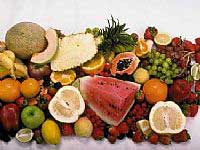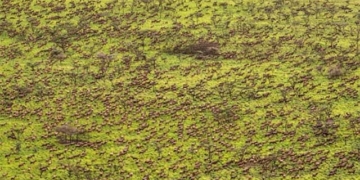 |
|
Eating certain types of fruits and vegetables can help treat itching in children. |
Itching in young children is a common skin condition with complex causes, but it is believed to have a hereditary component. It is often seen in overweight children with a tendency towards allergies.
Most children start showing symptoms 1-2 months after birth until around 2 years old when the condition gradually fades. Initially, the child experiences itching on the cheeks, often rubbing their head or scratching with their hands. This is followed by small bumps resembling rice grains that become blistered; once these blisters burst, they leak a yellow fluid and later crust over. The severity of the condition can vary, but it is usually very itchy, causing the child to be fussy, which affects their eating, sleeping, and overall development.
Traditional Chinese medicine attributes itching to internal heat, with external factors like heat, wind, and humidity leading to the infiltration of pathogens into the skin. Among these factors, “humidity” is considered the primary cause. Humidity creates sticky, heavy conditions that can change easily, leading to prolonged symptoms with variable presentations. Chronic conditions arise from inadequate nutrition, damp heat accumulation, leading to blood deficiency damaging yin, causing dryness and wind, and the stagnation of humid heat that impairs skin nourishment, linking the onset of itching to dietary habits. Thus, long-term dietary management is crucial in treating itching.
Important Considerations
– Ensure the skin is kept clean and avoid irritants (like scratching or sun exposure). Clothing should be loose and soft.
– Avoid allergenic foods such as seafood (shrimp, shellfish, crabs) or any strong-smelling foods. Nursing mothers should also avoid foods that the child is allergic to.
– Maintain normal digestion and avoid overeating. Children with this condition should eat bland foods to prevent excessive water and sodium retention.
– Using vegetable oil can increase unsaturated fatty acids, which may reduce the occurrence of itching.
Traditional Remedies
Recipe 1: 3g of Longdan grass and Huangling, 10g each of Shengdi and Qian cao, decoct and drink one dose daily, divided into two servings.
Recipe 2: 5g each of Tizhi, Acorus calamus, and Fructus Amomi, Decoction for one dose daily, divided into two servings.
Recipe 3: 5g each of Baiqianpi, Bitter ginseng, Windgrass, and cicada slough, decoct and drink twice a day.
Recipe 4: 5g each of fresh Qian cao, fresh Shengdi, and wild chrysanthemum, decoct and drink one dose daily, divided into two servings.
Dietary Treatment
Recipe 1: 30g of loofah, wash clean, add a little salt, cook and eat the pulp with the soup.
Recipe 2: 30g each of Portulaca oleracea and water spinach, cook as a soup.
Recipe 3: 30g of water spinach, 15g of corn silk, and 10g of lotus root, cook as a soup.
Recipe 4: 30g each of green beans and lily bulb, cook as porridge.
Recipe 5: Fresh eel boiled without the skin, eat as soup.
Recipe 6: 50g of glutinous rice and 30g of agar, cook as porridge.
Recipe 7: 30g each of Job’s tears and lotus seed powder, grind into fine powder and cook as porridge.
Recipe 8: 30g each of red beans and wax gourd peel, decoct and drink as tea, can be consumed regularly.
Recipe 9: Green tea, fresh fruit juice, or tomato juice consumed regularly.
External Treatments
– Remove the seeds from jujube, roast until cooked, mix equal parts with camphor and Huangbai, grind into powder and apply to itchy areas.
– Mix equal parts of calcined gypsum, calcined lime, and red copper sulfate, grind into powder and sprinkle on painful areas. This is used for treating itching with excessive discharge.
– Use a boiled egg, take the yolk, put it in a pan to fry until oil is extracted, and apply to itchy areas.
– Burn dry tofu to ash, grind into powder, and mix with tea, apply to affected areas. Take an adequate amount of bitter melon and loofah leaves, dry, chop finely, grind into powder, mix with fish oil and rapeseed oil, and apply to lumps.
– Use shell powder, burn lightly to refine, grind into fine powder, and mix with rapeseed oil for application. Use guava leaves decocted for application on lumps.
Other Methods
Washing externally:
Recipe 1: 9g each of Huangbai, honeysuckle, and Sa shangzi, 6g each of bitter ginseng, Huanglian, and alum boiled in 500ml of water. Use this solution to wash the affected area 2-3 times a day.
Recipe 2: 20g each of Shengdi, horse teeth, and Huangbai decocted for washing, used for excessive discharge in itching.
Smoking: Mix 45g of Angelica and 60g of cedar wood, 150g of jujube seeds, and 15g of five-flower fruit; 45g each of bitter ginseng, Huangbai, and windgrass; 15g of Baiqianpi and 60g of Hecang, grind into powder. Use two pieces of paper to roll 6g of the mixture into a cigarette. After lighting, smoke the affected area for 15 minutes each session, used for chronic itching.
Things to Avoid
– Avoid using soap for washing skin as it can exacerbate itching. If scales are thick, oil from hemp seeds can be applied to soften the skin.
– Avoid using thick blankets, as they can cause itching; do not use wool blankets or wear wool clothing.
– Avoid antibiotics or allergenic substances, and conduct careful tests before injections or be extremely cautious when taking orally.


















































